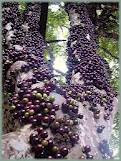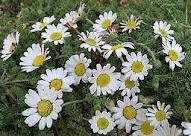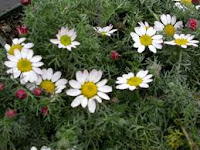 EUROPEAN MANDRAKE, MANDRAGORA OFFICINARUM
EUROPEAN MANDRAKE, MANDRAGORA OFFICINARUM European mandrake has a long history of uses, as well as superstitions. It was not until the spread of Humanism and the Renaissance that the thinking man began to reject the lore surrounding the mandrake root and stripped bare the uses it might have.
This mandrake is famous for its root which can be forked, and in the dim and distant past it was thought to be a root which had human forms, and to this end it was shaped into amulets by skillful carvers, to ward off evil spirits and spirit possession as well as to safeguard the owner or wearer from all ills that could possibly befall him or her. Skillful carvers often substituted bryony roots for those of the mandrake and passed them off as such, commanding high prices for the counterfeit goods.

In the ancient world however mandrake was used for its medicinal properties, with patients in
Rome (so we are told by Pliny) chewing on mandrake root prior to undergoing surgery. The root has pain-killing properties and has been used for toothaches and as a sleep inducer for those who were in prolonged pain. Small doses were given to cure depression (melancholy) and mental disturbances, although overdoses actually drove people mad.
Hildegard von Bingen the abbess who studied herbs and medicine noted that mandrake was responsible for “illusions” while Plato recommended its use as an anesthetic and Aristotle thought it was good to induce sleep. There are cuneiform writings from Assyria, Babylon and Mesopotamia which show it was used in medicine, for a whole variety of ailments including abscesses, ulcers, labour pains, and many more.
The ancient Egyptians used it as evidenced by its inclusion in the Ebers Papyrus dating back to around 1,700 BC, which is a list of plants and their medical uses. There are pictures of it in King Tutankhamen’s tomb, and it is clear from this evidence that it was held in high regard in ancient
Egypt. It is believed to have arrived there from Palestine as mandrake or mandragora as it was known, is native to the Mediterranean, and stretches throughout the Aegean and North Africa as well as being present in the Iberian peninsula.
Mandrake is a member of the Solanaceae family and so is a relative of
Belladonna or deadly nightshade, which also makes it a relative of the
tomato and
potato both of which were treated with suspicion when first introduced into
Europe. Mandrake although a native, had the same reputation in the Middle Ages and earlier, as the Anglo-Saxons certainly believed that it was a magical root. It was said to grow under gallows trees where murderers had been hanged, and if one dug up the root death would surely follow.

Josephus (c. 37 AD – c. 100,
Jerusalem) gives the following directions for pulling it up:
“A furrow must be dug around the root until its lower part is exposed, then a dog is tied to it, after which the person tying the dog must get away. The dog then endeavours to follow him, and so easily pulls up the root, but dies suddenly instead of his master. After this the root can be handled without fear.”
The root, because it seemed to have human form, although in fact it looks more like a gnarled carrot or parsnip, was said to scream hideously and groan when removed from the soil and anyone who heard the scream would die. If you saw the Harry Potter movies or read the books you will remember that Harry’s classmates were given ear protectors when they had to repot the mandrakes, but of course poor Neville Longbottom passed out. Clearly Ms Rowling had been influenced by the folklore of the mandrake.

It was supposedly used in witches flying ointment too and given its narcotic properties one can imagine some poor superstitious fool drinking a potion containing mandragora and seeing witches fly.
The whole plant is said to be poisonous, although reportedly the ripe fruit as well as the leaves are edible. There is little evidence to point to the correct dose of either, however. This is what one of the older British herbalists, Turner had to say about mandragora in his “Nieuwe Herball”
“Of the apples of mandrake, if a man smell of them they will make hym slepe and also if they be eaten. But they that smell to muche of the apples become dum . . . thys herbe diverse wayes taken is very jepardus for a man and may kill hym if he eat it or drynk it out of measure and have no remedy from it.... If mandragora be taken out of measure, by and by slepe ensueth and a great lousing of the strength with a forgetfulness.”
The fruit of the mandrake has been called the devil’s apple and indeed, it smells rather like an
apple, even though it doesn’t really look like one. It follows the flowers which can be purple or white tinged with purple at the tips of the petals.

In the ancient world it was reputedly an aphrodisiac and this is its claim to fame in The Bible where it is mentioned in Genesis, when Rachel used it to get Jacob to impregnate her. It is again mentioned in The Song of Songs in the Book of Solomon in the context of love-making. Medicinally it was used to cure sterility.
It was stated by Plutarch that during the Parthian Wars, Marcus Antonius’ soldiers were poisoned by mandrakes.
Interestingly it was the English herbalist, John Gerard writing in the 16th century who appeared to be the first to pour scorn on the alleged magical powers of the mandrake. He wrote that they were “old wives tales” which the (then) modern man would do best to forget.
The plant contains hyoscine which is used as a pre-operation drug and is also used to prevent travel sickness. It also contains podophyllatoxin which is currently being studied for its effects on cancers and possible use in HIV treatments.
Ointments were made as well as infusions for use externally to get rid of skin problems such as ulcerous sores. Its leaves have cooling properties and have been employed in poultices having first been boiled in milk and placed on the skin to get rid of ulcerous sores. The root was finely scraped and pounded to a pulp then put into brandy and drunk as a cure for rheumatism. It tastes foul and has to have its flavour masked.
It can be steeped in wine for a week with
cinnamon sticks and lots of
saffron and sweetened with royal jelly and
honey, although with those ingredients, it would be curious as to which was most effective against any disease. I think this is an ancient remedy which has had a resurgence in popularity as people look for different psychotropic experiences.
 Jabuti means tortoise and caba means place in the local Tupi language, so the trees grow in the place of tortoises. The tree is a slow growing evergreen which can reach heights of forty-five feet in its natural habitat, although they don’t grow that tall in southern
Jabuti means tortoise and caba means place in the local Tupi language, so the trees grow in the place of tortoises. The tree is a slow growing evergreen which can reach heights of forty-five feet in its natural habitat, although they don’t grow that tall in southern  In their natural habitat, and if they are irrigated well and looked after they can produce up to five crops of fruit every year, but usually only manage two. The fruit are eagerly awaited in the areas where they grow, but they are not sold very far afield because they perish quickly and cannot be exported. They are eaten raw, although one shouldn’t eat the skins as they are very astringent as they have a high tannin content, which could be harmful if eaten in large quantities for a prolonged period of time. They are eaten raw or used to make jams and marmalades, although they have to have added pectin to set. Wine can also be made from the fruit which can be sweet or slightly acid and astringent, depending on the variety. The fruit can be bright green when ripe, or purple-black, red-purple and burgundy-purple tasting spicy and slightly acid. It can range from between two and six centimetres in diameter, and has white, gelatinous flesh which clings to the seeds it contains (from 1 to 4). It has been likened to a muscadine grape (hence the name grape tree) with larger seeds.
In their natural habitat, and if they are irrigated well and looked after they can produce up to five crops of fruit every year, but usually only manage two. The fruit are eagerly awaited in the areas where they grow, but they are not sold very far afield because they perish quickly and cannot be exported. They are eaten raw, although one shouldn’t eat the skins as they are very astringent as they have a high tannin content, which could be harmful if eaten in large quantities for a prolonged period of time. They are eaten raw or used to make jams and marmalades, although they have to have added pectin to set. Wine can also be made from the fruit which can be sweet or slightly acid and astringent, depending on the variety. The fruit can be bright green when ripe, or purple-black, red-purple and burgundy-purple tasting spicy and slightly acid. It can range from between two and six centimetres in diameter, and has white, gelatinous flesh which clings to the seeds it contains (from 1 to 4). It has been likened to a muscadine grape (hence the name grape tree) with larger seeds. In
In 



































